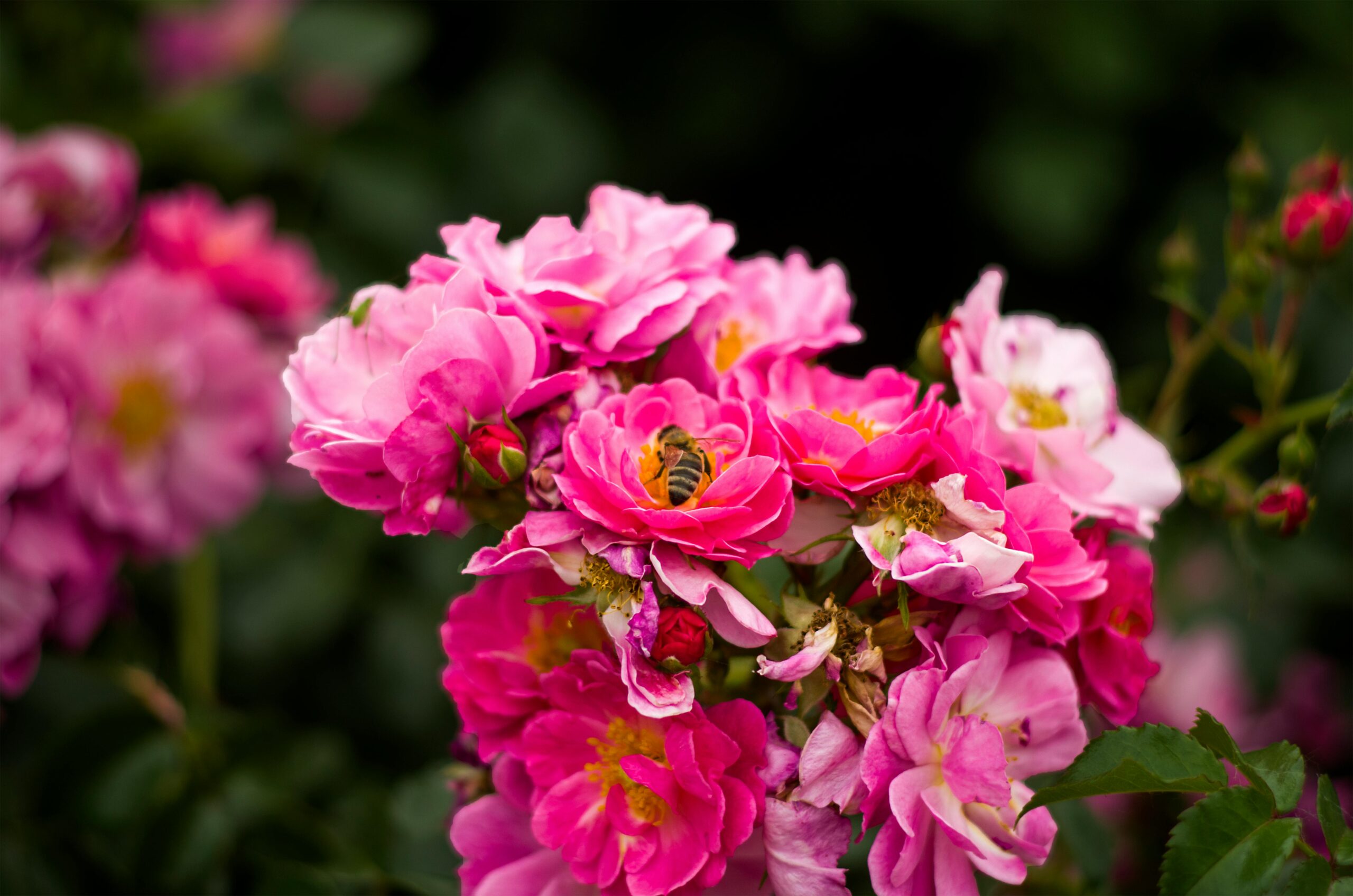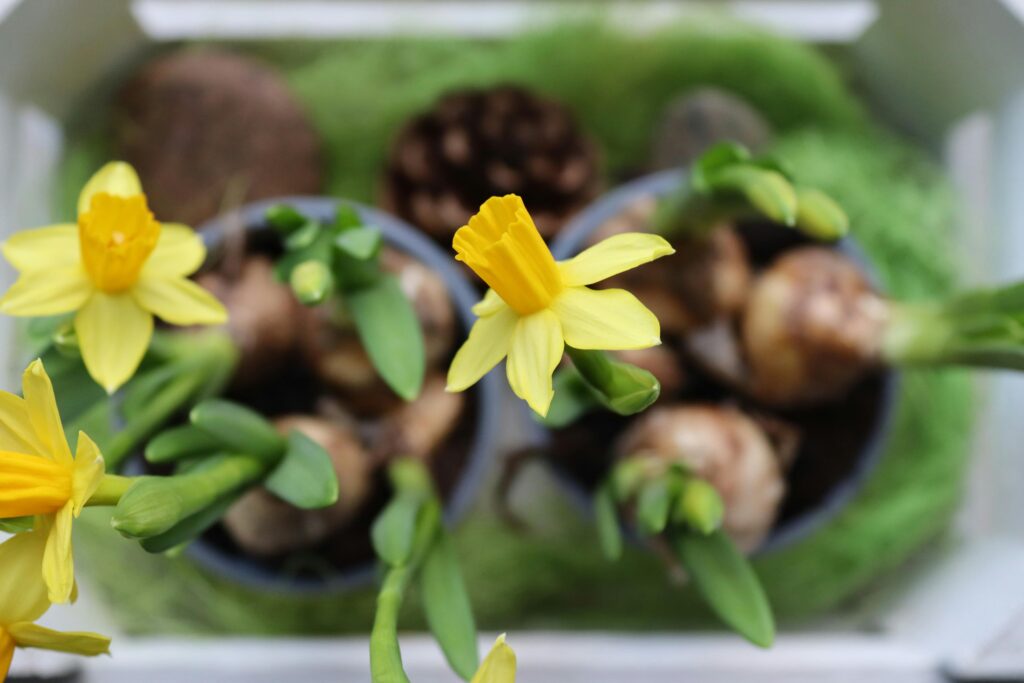
Have you ever walked through a vibrant garden in full bloom during spring and felt a sense of peace and joy wash over you? The beauty of a well-maintained garden during the spring season is truly a sight to behold. As the winter frost melts away, and the sun starts to bring warmth back to the earth, gardeners everywhere eagerly await the opportunity to embark on their spring gardening journey.
In this comprehensive guide on spring gardening, we will delve into the wonderful world of “Jardinization in spring.” From preparing your soil and selecting the perfect plants to implementing sustainable gardening practices and creating a welcoming habitat for beneficial insects, this article will equip you with all the knowledge and tools you need to transform your garden into a breathtaking oasis of color and life.
Whether you are a seasoned gardener looking to take your skills to the next level or a novice with a newfound passion for planting, this article is designed to inspire, educate, and empower you on your gardening journey. Get ready to roll up your sleeves, dig into the dirt, and watch your garden thrive with the magic of springtime jardinization.
The Importance of Spring Gardening and Its Benefits
Spring gardening, also known as jardinización en primavera, is a popular activity for many people as the weather starts to warm up and plants begin to bloom. But why is spring gardening so important and what are the benefits of engaging in this activity?
Importance of Spring Gardening:
1. Boosts Mental Health: Engaging in gardening activities has been shown to reduce stress, anxiety, and depression. The act of tending to plants and watching them grow can be incredibly therapeutic and rewarding.
2. Promotes Physical Health: Gardening is a great form of exercise that can help improve strength, flexibility, and coordination. Digging, planting, and weeding are all physical activities that can keep you active and healthy.
3. Enhances the Environment: By gardening in spring, you are not only beautifying your own space but also contributing to a healthier environment. Plants help improve air quality, provide habitats for wildlife, and promote biodiversity.
Benefits of Spring Gardening:
1. Fresh and Healthy Produce: Spring gardening allows you to grow your own fruits, vegetables, and herbs, ensuring that you have access to fresh and organic produce right in your backyard.
2. Beautiful Blooms: Spring is the time when many flowers start to blossom, adding splashes of color to your garden. Enjoy the beauty of tulips, daffodils, and cherry blossoms right outside your door.
3. Connection to Nature: Gardening in spring allows you to connect with the natural world and observe the cycles of growth and renewal. It can be a meditative practice that helps you appreciate the beauty of the changing seasons.
Example of Success: Sarah, a busy professional living in the city, decided to start a small garden on her balcony during the spring. She planted herbs, flowers, and vegetables in pots and dedicated a few minutes each day to tend to them. Not only did she enjoy the process of gardening, but she also found that it helped her relax after a long day at work. As the season progressed, Sarah was able to harvest fresh herbs for cooking and enjoyed the colorful flowers that bloomed on her balcony. Spring gardening became a therapeutic and rewarding hobby for her, bringing a little piece of nature into her urban lifestyle.
In conclusion, spring gardening is not just about planting flowers and vegetables – it is a holistic activity that can benefit your mental, physical, and emotional well-being. By taking the time to jardinizar en primavera, you can reap the rewards of a beautiful garden and a healthier lifestyle.

How to Apply Spring Gardening Step by Step
Content: Spring is the perfect time to get your hands dirty and start gardening, but where do you begin? Follow these simple steps to make the most out of your spring gardening experience:
1. Plan Your Garden Layout:
– Determine the location of your garden beds or containers.
– Consider the sunlight exposure and drainage in each area.
– Sketch a rough layout of where you want to plant each type of flower, vegetable, or herb.
2. Prepare the Soil:
– Clear out any weeds or debris from the garden area.
– Test the soil pH and nutrient levels to determine if any amendments are needed.
– Dig and loosen the soil to a depth of at least 12 inches to improve drainage and aeration.
3. Choose Your Plants:
– Select flowers, vegetables, or herbs that are suitable for spring planting in your area.
– Consider the mature size of the plants and ensure they have enough space to grow.
– Plan for a mix of colors, heights, and textures to create an aesthetically pleasing garden.
4. Plant Your Garden:
– Follow the planting instructions for each type of plant, including spacing and depth requirements.
– Water the plants immediately after planting to help them establish roots.
– Consider using mulch to conserve moisture and suppress weed growth.
5. Maintain Your Garden:
– Water your garden regularly, especially during dry spells.
– Monitor for pests and diseases, and take proactive measures to protect your plants.
– Deadhead flowers, pinch back growth, and harvest vegetables to promote continued growth and blooming.
By following these steps, you can create a beautiful and thriving garden that will bring you joy throughout the spring season. Happy gardening!
Tips for Spring Gardening:
✅ Start with a clean slate: Clear out any debris or dead plants from the previous season to make room for new growth.
❌ Don’t forget to prep the soil: Make sure to amend the soil with compost or fertilizer to provide essential nutrients for your plants.
💡 Extra tip: Consider starting your seeds indoors to give them a head start before transferring them to your garden.
✅ Plan your garden layout: Take into account sunlight, water access, and plant compatibility when designing your garden.
❌ Avoid overcrowding: Give your plants enough space to grow and thrive by following recommended spacing guidelines.
💡 Extra tip: Mulch your garden beds to help retain moisture, suppress weeds, and regulate soil temperature.
✅ Stay on top of watering: Check the moisture levels of your soil regularly and adjust your watering schedule accordingly.
❌ Don’t skip regular maintenance: Keep up with tasks like weeding, pruning, and pest control to ensure a healthy garden.
💡 Extra tip: Consider companion planting to naturally repel pests and promote the growth of your plants.
✅ Enjoy the process: Gardening is a rewarding and therapeutic activity, so take time to appreciate the beauty of your garden as it grows throughout the season.
By following these tips for spring gardening, you can create a vibrant and flourishing garden to enjoy throughout the season
Key Concepts for Spring Gardening
As we welcome the arrival of spring, gardeners everywhere eagerly prepare for the transition to a new season of growth and abundance. Spring gardening, also known as “jardinización en primavera,” is a time of renewal and transformation in the garden. In this section, we will explore key concepts that are essential to understanding and mastering the art of spring gardening.
1. Seasonal Transition: Spring marks the beginning of a new cycle in the garden, where dormant plants start to awaken and new life emerges. Understanding the natural rhythms of the seasons is crucial for successful gardening. As temperatures rise and daylight hours increase, plants respond by shifting their growth patterns and focusing their energy on producing foliage, flowers, and fruits.
2. Soil Preparation: One of the fundamental principles of spring gardening is soil preparation. Healthy soil is the foundation of a thriving garden, providing essential nutrients, moisture, and support for plant growth. Before planting, gardeners should assess the condition of their soil, amend it as needed, and ensure proper drainage to create an optimal growing environment for their plants.
3. Plant Selection: Choosing the right plants for your spring garden is key to creating a beautiful and productive space. Consider factors such as your local climate, soil type, sun exposure, and plant hardiness when selecting varieties for your garden. Whether you prefer colorful annuals, fragrant herbs, or bountiful vegetables, there are endless possibilities for creating a diverse and vibrant garden.
4. Pruning and Maintenance: Spring is a time of rejuvenation for plants, making it an ideal season for pruning and maintenance tasks. Trimming back overgrown branches, deadheading spent flowers, and dividing overcrowded perennials are essential practices that promote healthy growth and flowering. Regular maintenance not only enhances the appearance of your garden but also prolongs the lifespan of your plants.
5. Pest and Disease Management: As the garden comes to life in spring, so do pests and diseases that can threaten the health of your plants. Integrated pest management (IPM) strategies, such as using beneficial insects, companion planting, and organic pesticides, can help control unwanted pests while minimizing harm to the environment. Early detection and prompt action are key to preventing widespread damage in the garden.
6. Seasonal Care: Providing proper care and attention to your plants throughout the spring season is essential for their success. This includes watering consistently, applying mulch to retain moisture and suppress weeds, and fertilizing to promote vigorous growth. Regular monitoring of your garden allows you to identify any issues early on and address them proactively.
In conclusion, mastering the art of spring gardening involves a combination of knowledge, skill, and dedication. By understanding and applying these key concepts, gardeners can create a thriving and beautiful garden that flourishes throughout the spring season and beyond. Embrace the joy of jardinización en primavera and let your garden bloom with vitality and abundance.
Frequently Asked Questions (FAQs) about Spring Gardening
❓ What are the benefits of gardening in spring? Spring gardening allows you to take advantage of optimal growing conditions, such as warmer temperatures and increased sunlight, resulting in healthier plants and abundant harvests.
❓ When is the best time to start gardening in spring? The ideal time to start gardening in spring varies depending on your location and climate. In general, wait until the last frost date has passed before planting sensitive crops.
❓ What are some essential tasks to do for spring gardening? Some essential tasks for spring gardening include cleaning up garden beds, preparing the soil, planting seeds or seedlings, mulching, and monitoring for pests and diseases.
❓ How often should I water my garden in spring? The frequency of watering your garden in spring depends on factors such as weather conditions, soil type, and the needs of your plants. It’s essential to check the moisture levels regularly and water deeply when necessary.
❓ Can I start a garden in spring if I’m a beginner? Absolutely! Spring is a great time for beginners to start gardening as it offers a fresh start with favorable conditions for plant growth. With some basic knowledge and tips, anyone can enjoy a successful garden in spring

3 Comments